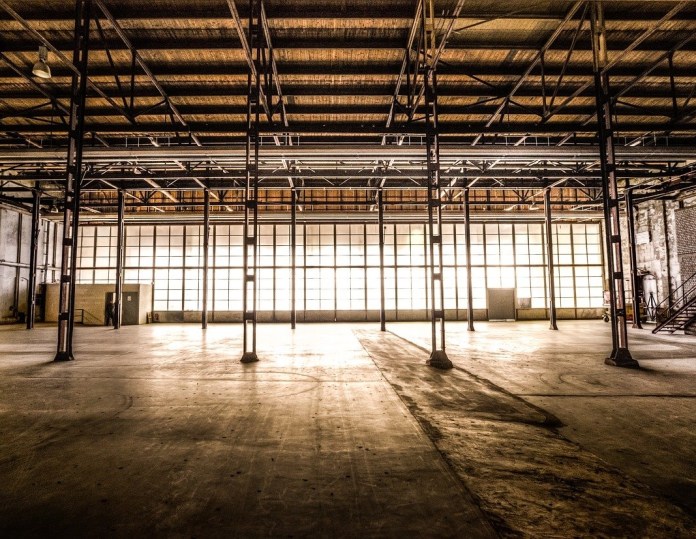Staten Island’s Industrial Past Shapes Its Future
Ariel Property Advisors Director John Higgins on factors driving the New York City borough’s elevated growth.
Alternative real estate continues to make strides and demand for fulfillment centers in and around high-density urban metros is reaching new heights. JLL expects e-commerce sales to reach $1.5 trillion by 2025, increasing the demand for industrial space to an additional 1 billion square feet—and 30 million to 40 million square feet would rise in New York City alone.

As Staten Island is home to the most undeveloped industrial-zoned land in New York City, local and national investors such as RXR Realty and Prologis are seizing the opportunity. And according to a recent report from homegrown company Ariel Property Advisors, the borough saw $322 million in investment sales in 2020. Despite the economic slowdown, the amount was nearly on par with the total transaction volume recorded a year before.
In an interview with Commercial Property Executive, John Higgins, director of investment sales at Ariel Property Advisors, talks about Staten Island’s promising future and the way it’s becoming more than a bedroom community for commuters working in Manhattan.
READ ALSO: Industrial Real Estate’s Positive Prognosis
How does Staten Island’s industrial sector compare to the rest of NYC?
Higgins: Staten Island’s industrial sector is experiencing rapid growth and offers the most undeveloped industrial-zoned land throughout NYC. Unlike several pockets of Brooklyn, Queens and the Bronx, Staten Island’s industrial land hasn’t been rezoned to residential.
Please share a few details about the current factors driving industrial demand across the borough.

Higgins: With the rise of e-commerce, the demand for last-mile distribution and logistics centers has grown rapidly. Staten Island is well-positioned to deliver on this, providing access to more than 15 million consumers within an hour’s drive. The Island offers direct access to all five boroughs as well as New Jersey, with close proximity to Newark Airport and Port Elizabeth.
What can you tell us about industrial activity in Staten Island year-to-date?
Higgins: There haven’t been major acquisitions in 2021 just yet, but there were two major industrial development sales to highlight from December 2020. Dov Hertz’s DH Property Holdings acquired a 45-acre site at 1900 South Ave. along the West Shore Expressway near the Goethals Bridge and the Matrix Global Logistic Park.
Northpoint Development, a Midwest-based industrial development company, acquired a 206-acre site on the South Shore of Staten Island at 4101 Arthur Kill Road.
Looking at the industrial activity in 2020 alone, the two acquisitions mentioned above, along with a third one at 1 Nassau Place by EverWest Real Estate Investors, totaled $181 million and accounted for 56 percent of the total dollar volume boroughwide.
Which are the most appealing neighborhoods for industrial developers and why?
Higgins: Developers focused on the Bloomfield/Chelsea and Rossville/Charleston neighborhoods because of the proximity to major highways and bridges on Staten Island.
The Bloomfield/Chelsea area, which is home to Amazon and an Ikea distribution center, provides easy access to the Goethals Bridge, the West Shore Expressway and the Staten Island Expressway.
The Rossville/Charleston area is on the South Shore of the Island, allowing easy access to the Outerbridge Crossing, Route 440 and the West Shore Expressway.
Many call the borough an untapped opportunity for NYC. What has kept Staten Island from being developed until now?
Higgins: As I mentioned, the rezonings in Brooklyn, Queens and the Bronx have created limited supply throughout NYC. This lack of supply, along with the rising demand for industrial land has caused investors and developers to look outside of traditional areas, resulting in Staten Island’s growth.
Amazon has been rapidly expanding in the area since 2018. How do you see the company’s evolution within the borough? Tell our readers more about the giant’s current impact on the local industrial distribution market.
Higgins: Amazon’s initial expansion in the area consisted of an 855,000-square foot distribution center. In 2020, the giant added close to 1.4 million square feet of warehouse space, bringing its total to approximately 2.3 million square feet at the Matrix Global Logistic Park.
The area along the West Shore Expressway referred to as the “jobs coast” by Staten Island Borough President James Oddo has been successful for the online retailer and the economic growth of the area. Amazon has grown to be one of the largest employers on the Island and its success has continued to put the area at the forefront of industrial investors’ and developers’ minds.
With increased investor interest, are there any challenges that lie ahead for the borough’s industrial sector?
Higgins: With significant growth in the sector will come the need for infrastructure improvements. Upgrades to roads will improve access to the area for vehicles using the distribution centers and help to relieve traffic concerns for those living in and around these areas.
Additionally, mass transit upgrades and expansions will create better workforce commuting options. The public sector has an opportunity to further drive economic growth throughout the borough by prioritizing Staten Island.
How do you see the market going forward? Are there any trends investors should keep tabs on?
Higgins: As mentioned previously, Staten Island has the most underdeveloped M Zone-land in NYC, so it will continue to be a player in the space as the need for industrial centers in densely populated areas grows. The developers that acquired land in 2020 were focused on the development of logistics centers and distribution facilities.
Cold storage is something to keep in mind as demand for facilities has increased throughout the pandemic, specifically micro-fulfillment centers for last-mile delivery. Investors and developers will also continue to look at the development of self storage facilities.








You must be logged in to post a comment.